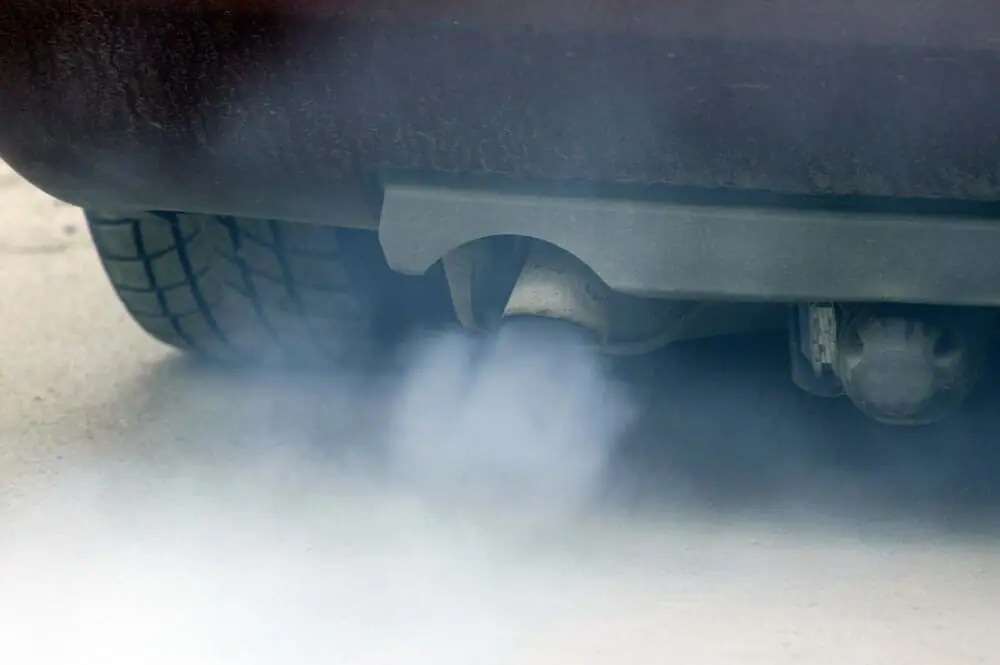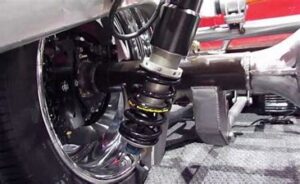Is your car smoking after oil change? That’s something you most certainly don’t see every day, and it can even be quite terrifying. But don’t worry, we’re here to simply explain the riddle of why your automobile started smoking after an oil change. Imagine this: After getting new oil put in your engine, you leave the auto shop and immediately notice smoke coming from your tailpipe. What is happening? It turns out that this unanticipated smokescreen has a few common causes.
We’re going to explain everything to you in simple, understandable terms in this article. We’ll look into the causes of smoke coming from your automobile after an oil change. Additionally, more importantly, how to remedy it. So, if you’re curious as to why your reliable vehicle has unexpectedly transformed into a smoke machine, keep reading to get the answers you need!
Table of Contents
Reasons Why Is Car Smoking After Oil Change?
It can be strange to see your automobile smoke after an oil change. It occurs as a result of oil spills, using the incorrect oil, or other minor problems. Let’s examine the cause of it.
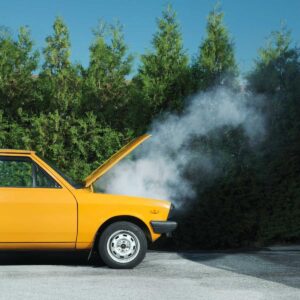
1. Spillage Of Oil:
A little bit of oil may occasionally leak during an oil change and get on the engine parts. During your drive, the engine may heat up and this spilt oil may burn off, producing smoke.
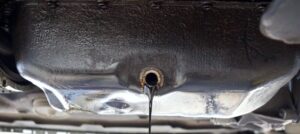
2. Mismatched Oil Type:
Smoking might result from using the incorrect oil. If conventional oil is used when your car needs synthetic oil, the engine cannot be adequately lubricated, overheating and emitting smoke.
3. Oil Filter Problems:
Oil not flowing through the engine properly might result in overheating and smoke if the oil filter is not installed correctly or is the incorrect size.
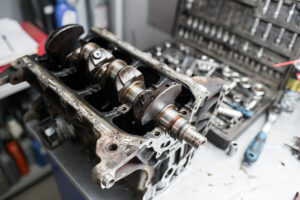
4. Residual Oil:
After an oil change, it’s possible for old oil residue to stay in the engine, mix with the new oil, and cause smoking.
5. Gasket Issues:
As oil drips onto hot engine components, it can cause smoke when gaskets fail and cause oil leaks.
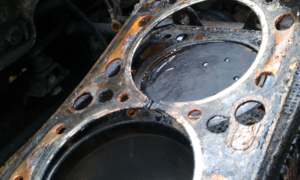
Therefore, these are some common causes of car smoking after oil change. Don’t panic, this article will show you some straightforward solutions to these problems.
Car Smoking After Changing The Oil: A Step-by-Step Guide To Fix It
Don’t worry if your automobile starts smoking after an oil change. There are steps you can take to resolve this issue because it is a common one. Here is an easy, step-by-step manual to assist you in getting rid of that bothersome smoke:
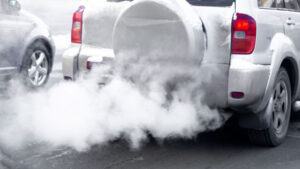
Step 1: First, Look For Spills
First, leave your automobile to cool off in a secure location. Search for any oil that has been spilt under your car and close to the engine. Use a clean cloth or paper towels to gently wipe away any oil you see on the engine or the ground.
Step 2: Confirm The Proper Oil
Verify that the oil change used the proper type and grade of oil. To ensure the right parameters, consult the owner’s manual for your car.
Step 3: Examine The Oil Filter
Find the oil filter in your car, which is typically a cylindrical canister. Make sure it’s properly sized for your car and that it’s mounted securely. Consult your mechanic if it feels loose or doesn’t fit the specifications.
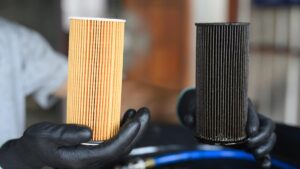
Step 4: Start The Engine
Start the engine of your car and let it run for a while. Smoke may occasionally first arise as a result of leftover oil. If it goes away quickly, it was probably just old oil burning off.
Step 5: Check For Gasket Leaks
If the smoke persists or doesn’t go away, it can be the result of faulty gaskets allowing oil to leak. Have a qualified mechanic check your engine for leaks and make any necessary repairs.
Step 6: Consult A Mechanic
It’s a good idea to speak with a mechanic if, after trying these solutions, your smoking problems persist. They are able to perform a comprehensive inspection, find the underlying issue, and carry out the required fixes.

Remember, you must take immediate action to resolve the problem in order to avoid risking engine damage. You can make sure your automobile runs smoothly and smoke-free after an oil change by following these instructions and getting professional assistance when necessary.
Explain The Different Smoke Colours In Detail
The colour of the smoke from your car’s tailpipe can help you determine what might be wrong if it is coming from the tailpipe. Here are the meanings of various smoke colours:
1. Blue Smoke:
Typically, blue smoke is an indication that your car is burning oil. Piston rings, valve seals, or an engine problem can all contribute to this. This problem must be resolved because it could eventually result in more serious issues and decrease fuel efficiency.

2. White Smoke:
White smoke might indicate a number of things. Like condensation burning off from a cold engine, it might be innocuous. But if it persists, it can be a sign of an engine coolant leak, which is a major issue that requires prompt care to avoid engine damage.
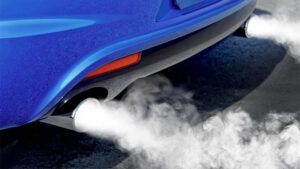
3. Black Smoke:
Typically, black smoke indicates that your car is using too much fuel. This may be caused by problems with the fuel system, a blocked air filter, or malfunctioning sensors. Pollution levels may rise and fuel efficiency may decline.

As a result, pay attention to the colour of the exhaust smoke coming from your car. You can keep your car running smoothly by using it to spot any issues early on. It’s always a good idea to visit a mechanic for an accurate diagnosis and any required repairs if you’re unclear about the smoke’s origin.
Can I Drive My Car If It’s Smoking?
If you observe your automobile smoking, especially if the smoke is dense or heavy, you shouldn’t drive it. Smoking typically indicates a problem with the oil or engine of your car. Driving while having these problems can make them worse and even result in costly harm. More importantly, if the smoke impairs your vision or if the issue results in a breakdown on the road, it might be unsafe.
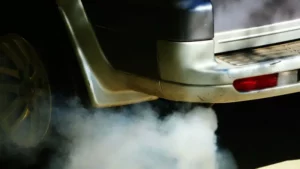
It is preferable to shut off the engine, allow it to cool, and then dial a mechanic or emergency roadside assistance. They are able to securely identify the issue and remedy it.
Repairing Cost To Fix The Smoke From A Car
The price to fix a car that starts smoking after an oil change can be very different. According to the source of the smoke. Cleaning up a basic problem, like an oil spill, might not be too expensive. But it can be pricey if there’s a bigger issue, like a bad gasket or engine damage. On average, small repairs could run you $50 to $200, and big ones might cost you $1,000 or more.
For a precise estimate, a mechanic’s diagnosis of the problem is necessary. Such issues can be avoided with regular car maintenance, which will end up saving you money over time.
Is It Safe To Inhale The Smoke From A Car?
Due to the presence of dangerous compounds and small particles, breathing automobile smoke is not safe. Oil burning or other engine issues may be the cause of this smoke. It can be particularly dangerous if you frequently breathe in these fumes because it might irritate your lungs and make you feel sick.
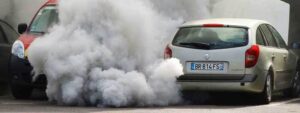
Avoiding inhaling in the smoke and having your car examined by a mechanic are both wise moves if you find your car is smoking. Due to the potential harm it can do to your lungs and general health, it’s critical to avoid smoke in order to maintain your health and safety.
Conclusion:
Now, that you’re aware of why is car smoking after oil change. Don’t freak out! Small problems like oil spills or using the incorrect sort are frequently to blame. If it still smokes, check these things and call a mechanic. Keep up with maintenance and your automobile should remain smoke-free! Regular oil changes are important for your car’s health! Do not hesitate to ask if you require anything, have any questions, or require any assistance. Your car’s well-being is our first priority. Driving safely and happily!
